Background
Physical preparedness is one of many attributes that firefighters need in order to execute their job in a safe, effective manner. Although the job of structural firefighting is the same for both career and volunteer, the ability to maintain physical preparedness is not.
Unlike career firefighters whose work schedules allow them to meet the demanding physical standard of the job, volunteer firefighters often juggle primary careers with 24/7 availability for emergency response. The dual nature of their responsibilities affords them less time to maintain physical readiness for firefighting. Additionally, volunteer firefighters who are still at “the end of the nozzle” every day rather than in leadership positions are often 10-15 years older than their full-time counterparts making the need for longevity paramount.
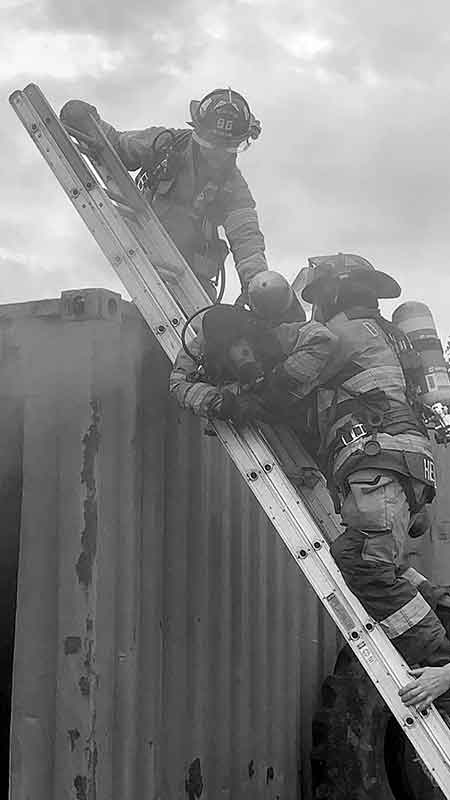
There are many strength programs that address physical preparedness for career firefighters. However, there are not many strength programs tailored to the needs of volunteer firefighters. In order to address this discrepancy, I created a strength program to instruct volunteer firefighters how to use low tech, inexpensive training equipment and methodologies at home or in a gym.
The Program
My training program targets the needs of volunteer firefighters in an effective, sustainable way taking into account the factors of age and time constraints. The program was designed to be testable and repeatable based on the metrics outlined in chapter six of NFPA 1583: Standards on Health-Related Fitness Programs for Fire Department Members, 2022 Edition. These metrics consist of the following:
- Aerobic capacity
- Body composition
- Muscular strength
- Muscular endurance
- Flexibility
(See Annex B in the aforementioned NFPA 1583 for detailed descriptions if you are so inclined.)
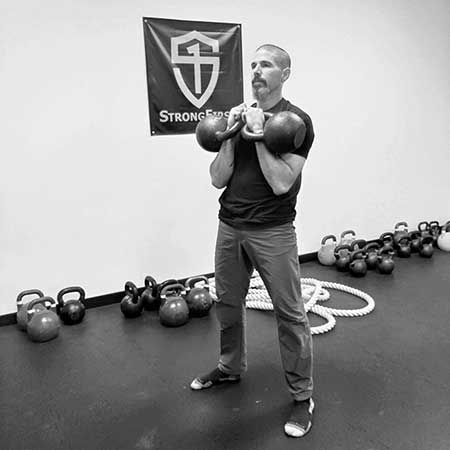
My program addressed these five areas with a focus on general physical preparedness, rather than focusing specifically on fire service skills. In contrast to drills, which develop a specific skill, the program strengthened functional movements such as hip hinging, squatting, pushing, pressing, pulling, and crawling. These movements have linear, rotational, isokinetic, and isotonic components to them. They directly transfer to fire service skills such as raising and climbing a ladder, using a pike pole, or Halligan, rapid intervention team/crew, dragging a hose to the seat of the fire, or searching a structure.
The specific goals were to lower resting heart rate, reduce blood pressure, improve mobility, increase general and specific strength, and develop the aerobic capacity of fast twitch muscle fibers while avoiding glycolysis. It was not intended to address unique imbalances or individual weaknesses, but to improve trainees’ overall health and educate them on how to train independently. It was designed as a mesocycle (typically three to four weeks but can be longer) comprised of several microcycles (generally up to seven days) over six weeks. Due to the need for time efficiency, training sessions amounted to no more than three hours of work per week or roughly three one-hour training sessions.
Pre- and Post-Assessment
The program participants were firefighters with at least seven years in the fire service ranging from 23 to 53 years of age. In order to track efficacy and improvement, we ran pre- and post-training assessments consisting of the following:
- Assessment: Injury history
- Metric:
- Evaluation
- Metric:
- Assessment: Cardiovascular health
- Metrics:
- Resting heart rate
- Heart rate reserve
- Harvard step test
- Metrics:
- Assessment: Strength endurance
- Metric:
- Max reps body weight squats
- Metric:
- Assessment: Flexibility / Movement
- Metrics:
- Toe touch test
- FMS squat test
- Metrics:
- Assessment: Body composition
- Metrics:
- Fit of clothing and personal protective equipment (PPE)
- Body weight
- Metrics:
- Assessment: Strength
- Metrics:
- Max pushups in one minute
- Max sit-ups in one minute
- Metrics:
Although the efficacy of max pushups and sit-ups as a metric is questionable, I included them in the pre- and post-assessments because it would probably be a common way to test, given that no equipment is needed. My prediction was that they would naturally improve with an increase in overall strength.
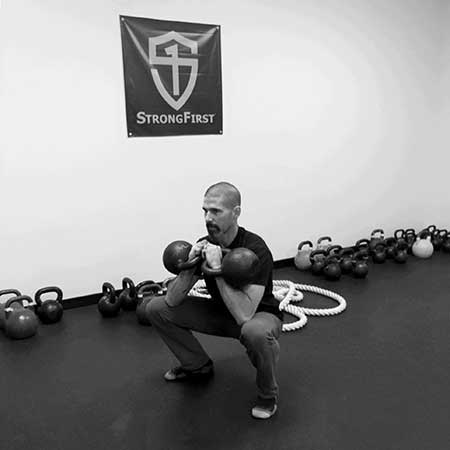
Equipment and Movements
The equipment used for the program were pullup bars, steps, kettlebells, battling ropes, and sandbags. We focused on kettlebell swings, double kettlebell front squats, one-arm kettlebell cleans, one-arm military press, goblet squats, kettlebell deadlifts, kettlebell halos, pullups, and various bodyweight movements (crawling and dive bombers, etc.). Battle ropes were incorporated more often at the beginning of the program but used less as participants learned proper kettlebell swing technique. Below is a sample training day from week two:
- Warm up: Mobility and Movement Prep
- Strength Training: Superset Military Press/Pullups
- Kettlebell Press: 5 reps (right and left sides) + Pullup: 5 reps
- Rest 3-5 minutes
- Perform a total of 5 sets
- Once you complete 5 sets of 5 reps, the next training session back off and do 5 sets of 4 reps with the next size down kettlebell (4kg decrease).
- After the deload, the following training session move up to the next heavier kettlebell (4kg increase) from your last 5×5 and work up to completing 5×5 with the new weight.
- Kettlebell Press: 5 reps (right and left sides) + Pullup: 5 reps
- Skills Training:
- Kettlebell Cleans: 5 reps (right and left sides)
- Goblet Squats: 5 reps
- Rest as needed
- Bodyweight Training (volume and intensity based on athlete’s progress):
- Hanging leg raises
- Plank
- Dive Bomber Pushups
- Creeping/Crawling movements (From Ground Force Method)
- Kettlebell Swings:
- Repeat Method:
- Four 15-second work intervals with 1’45” rest in between intervals. (This is a total of one minute of work spread out over eight minutes total training time.)
- Maintain this work to rest ratio and work up to three minutes total work by the end of week three.
- Repeat Method:
- Battling Ropes:
- Follow a similar interval protocol as the swings above.
Low tech/high concept training
MILITARY * LAW ENFORCEMENT * FIRST RESPONDERS
CLICK HERE
Results
The post-assessment yielded some interesting results. The cardiovascular, movement, and strength endurance assessments (bodyweight squats) did not show great improvements. This was not surprising as our trainees already had good initial numbers in these areas on the pre-assessment. Although not objectively measured, there were visible improvements in mobility and stability during crawling patterns. The strength assessment yielded the greatest improvements averaging about 8% increase in sit-ups and 30% increase in pushups. It is interesting to note that, as predicted, these increases came about without training these specific movements, but were benefits of improved overall strength. A “WTH” effect, as we say at StrongFirst. More importantly, the quality of their movement patterns improved. They were able to brace and contract harder, giving them more stability in overhead and dynamic movements which directly influenced their performance on the fireground. Lastly, there was also an improvement in body composition with an average of a two-pound increase in mass.
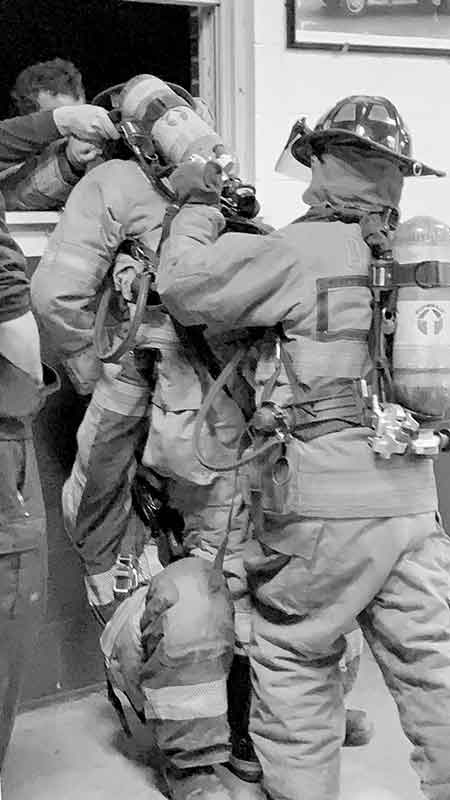
There is certainly the possibility of newbie gains and the consideration that our participants were already in good cardiovascular health. However, there was room for improvement in upper body strength, creating purposeful tension, and proper biomechanics. At the end of the program, none of the participants ran a four-minute mile or deadlifted 1,000 pounds. It was not intended to turn anyone into a hotshot. However, the program did result in significant improvements in movements that were not specifically trained during the six weeks. This revealed that a well programmed training plan can benefit those who have limited time and address the needs of volunteer firefighters. It served the purpose of educating volunteer firefighters on skill sets that can be applied to their own training schedule and provided them a resource to maintain general physical preparedness and longevity.




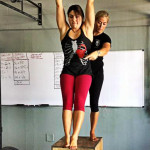
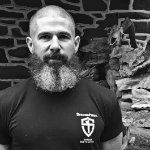


Great article, where do you find the whole program?
Hi John,
Great article, I’m still being acclimated with strong first acronyms, can you provide me with a link with SF acronyms and definitions. Thanks.
George B.
George, please visit our online forum at https://StrongFirst.com/forum/ and look at the FAQ (which stands for Frequently Asked Questions). In there you’ll find a link for a commonly used acronyms, and if there’s one you don’t find defined, please post a message on the forum and we’ll be glad to help you.